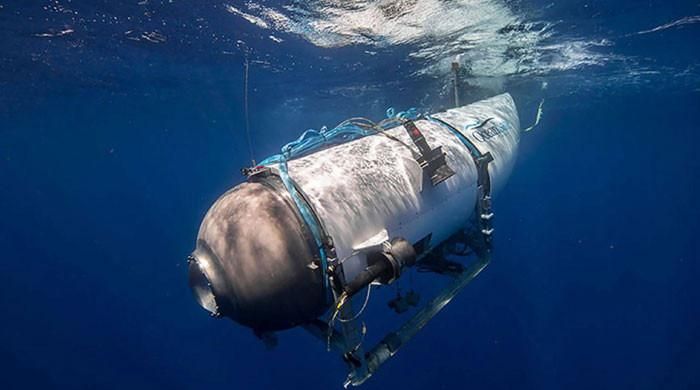New York: The Titan submersible had to abort a dive just days before the implosion that killed its five passengers as they explored the wreck of the Titanic, a former employee of the company that operated the ship testified Thursday.
The testimony by former OceanGate chief scientist Steven Ross came as the U.S. Coast Guard on Monday began a two-week hearing into the 2023 catastrophe, which will present evidence of what went wrong and whether a physical or design flaw contributed to the accident, which drew global attention.
Ross told the hearing that the earlier dive had to be aborted because of a valve malfunction that left at least one passenger hanging upside down and that it took “considerable time” to correct.
He said that when the privately owned and operated submersible surfaced during that dive, it tilted so that its bow was pointing upward at a 45-degree angle.
Ross, who was inside with four other passengers, said: “There is nothing to hold on to inside this submersible.”
The pilot that day — OceanGate CEO Stockton Rush, who died in the implosion days later — “crashed into the rear bulkhead,” Ross said.
“The rest of the passengers staggered and I ended up standing on the rear bulkhead,” he continued.
“One passenger was left hanging upside down and the other two managed to wedge themselves onto the bow end cover.”
He said no one was injured in the incident, but that inside the tight, cramped space “it was uncomfortable and unpleasant, and it took a considerable amount of time to correct the problem” – at least an hour, by his estimate.
Rush, he said, was “upset” by the incident.
Rush and four passengers descended in the submersible on June 18, 2023, to view the remains of the Titanic.
But contact was lost less than two hours after departure and a major rescue operation was launched in the hope that the passengers had simply run out of power and were hopelessly adrift in the depths of the ocean.
However, within days it became clear that the submarine had been destroyed in a cataclysmic implosion.
The victims are presumed to have died instantly in the disaster, which occurred under the crushing pressure of the North Atlantic at a depth of more than two miles (almost four kilometers).
Besides Rush, the four others aboard the Titan were British explorer Hamish Harding, French submarine expert Paul-Henri Nargeolet, British-Pakistani tycoon Shahzada Dawood and his son Suleman.
Nargeolet's family has taken OceanGate to court, seeking $50 million for negligence.
A debris field was found 1,600 feet (500 meters) off the bow of the Titanic, which lies 400 miles off the coast of Newfoundland, Canada.
The Titanic struck an iceberg and sank in 1912 during its maiden voyage from England to New York, with 2,224 passengers and crew on board. More than 1,500 people died.












